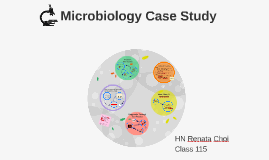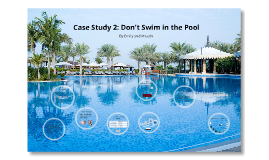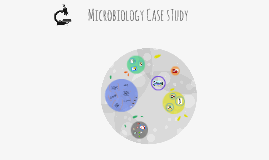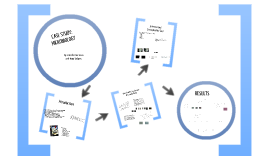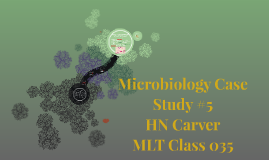Microbiology Case Study
Transcript: 4. What other nonpathogenic organisms commonly found in this type of specimen also cause this type of hemolysis? https://www.pinterest.com/pin/669347563337547508/?lp=true http://nursinglink.monster.com/training/articles/880-sputum-culture Blood and urine cultures were obtained to tell if the organism has spread to other parts of the body. Since Patrick was admitted to the emergency room, blood and urine cultures are routinely collected. http://www.quickmeme.com/meme/3r4vb5 Alpha-Hemolysis 2. Based on the colony morphology and the Gram's stain, what organism is suspect as the cause of Patrick's pneumonia? THANK YOU! Vaccination. For example, the PCV13 or Prevnar 13. Common preventative measures shold take place, such as: wash your hands, eat right, get enough sleep, and stop smoking. No, this patient does not have polymicrobial pneumonia. Continued... 7. Should antimicrobial susceptibility testing be performed on this pathogen? If so, what antimicrobial agent(s) should be tested? If not, why not? -Yes. - A Kirby Bauer plate with an Oxacillin disk should be used to determine resistance to penicillin. - Another test used is the E-Test (Epsilometer test), to test susceptibility to penicillin as well as Ceftriaxone. https://www.slideshare.net/anwarsh148/streptococcus-42218031 1. Based on the direct gram stain, what is the quality of this sputum specimen? Is this specimen of acceptable quality to provide clinically relevant information? 6. Organisms other than the predominant organism were seen in the Gram's stain and culture. Does this mean that the patient has polymicrobial pneumonia? Why are those other organsims present? -The quality of this sputum specimen is acceptable due to the amount of epithelial cells in the specimen. -For sputum to be an acceptable quality, no more than 25 squamous epithelial cells should be observed per low power field (lpf). Rare squamous epithelial cells: (<1/lpf) 8. What virulence factor does the pathogen possess that can help it evade the host's defense mechanisms? Patient Profile/History Microbiology Case Study #5 HN Carver MLT Class 035 The direct Gram Stain of the sputum specimen revealed the following: Many Neutrophils (>25/lpf) Rare Squamous Epithelial Cells: (<1/lpf) Many Gram-positive lancet-shaped diplococcic and cocci in short chains (>25/oil immersion field) Few Gram-negative diplococci (<10/oil immersion field. Few Gram-positive bacilli (<10/oil immersion) To differentiate between S. pneumoniae and S. viridans, an optochin test as well as a bile solubility test should be performed. After overnight incubation at 35 degrees Celsius in 5% to 7% CO2, a blood-agar plate inoculated with the specimen revealed a mixture of two colony types. Rare, non-hemolytic, tiny, white, dry-looking colonies were present. A predominance of small, wet-looking colonies were also seen, with a greening of the medium around them. -The urine culture showed no growth at 24 hours. All blood cultures were negative after 5 days of incubation. 9. What preventative measures can be used to prevent infection or reinfection of this pathogen? https://www.labce.com/spg327516_determine_the_quality_of_a_sputum_specimen.aspx Clinical Laboratory Science Review, Patsy Jarreau, 2011 https://www.ncbi.nlm.nih.gov/pubmed/15652608 http://www.austincc.edu/microbio/2421b/sp.htm https://microbeonline.com/e-test-epsilometer-test-principle-purpose-procedure-results-and-interpretations/ https://www.cdc.gov/pneumococcal/about/prevention.html https://microbeonline.com/bile-solubility-test-principle-procedure-expected-result-and-quality-control/ https://en.wikipedia.org/wiki/Etest Streptococcus viridans This Streptococci can also consist of gamma hemolysis as well as alpha, therefore explaining the "Rare, non-hemolytic, tiny, white, dry looking colonies present." 3. What type of hemolysis is described by the term "greening" of the medium? References Streptococcus pneumoniae consists of a polysaccharide capsule that prevents phagocytosis by the host's immune cells. S. pneumoniae also consists of surface proteins that prevent the activation of complement. A 75 Year-old man, Patrick R., presented to the emergency room with fever, shortness of breath, chest pain, and severe, extremely productive cough. Patrick had been a heavy smoker for almost 50 years before he quit seven years ago, when he was diagnosed with emphysema. Patrick occasionally used oxygen because of his severe respiratory distress. A chest x-ray revealed a right lower lobe infiltrate, and Patrick was admitted to the hospital. Sputum, urine, and blood cultures were collected. Streptococcus pneumoniae Colony morphology: "Small, wet-looking, convex (crater form), entire-edged colonies were also seen, with a greening of the medium around them." Gram-stain: "Many gram-positive lancet-shaped diplococcic and cocci in short chains." https://en.wikipedia.org/wiki/Disk_diffusion_test -Other organisms present in this specimen can be normal flora that is common in








